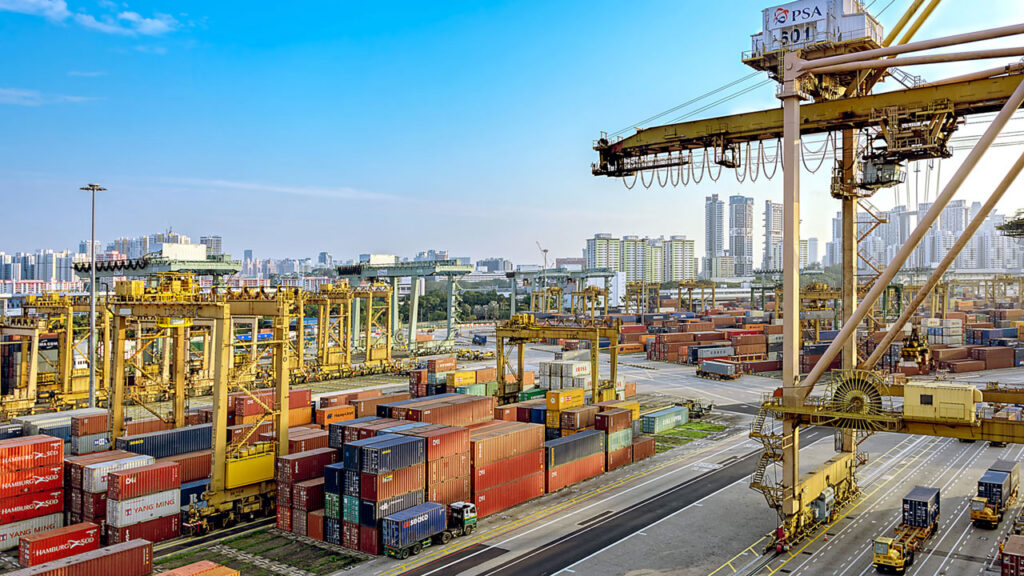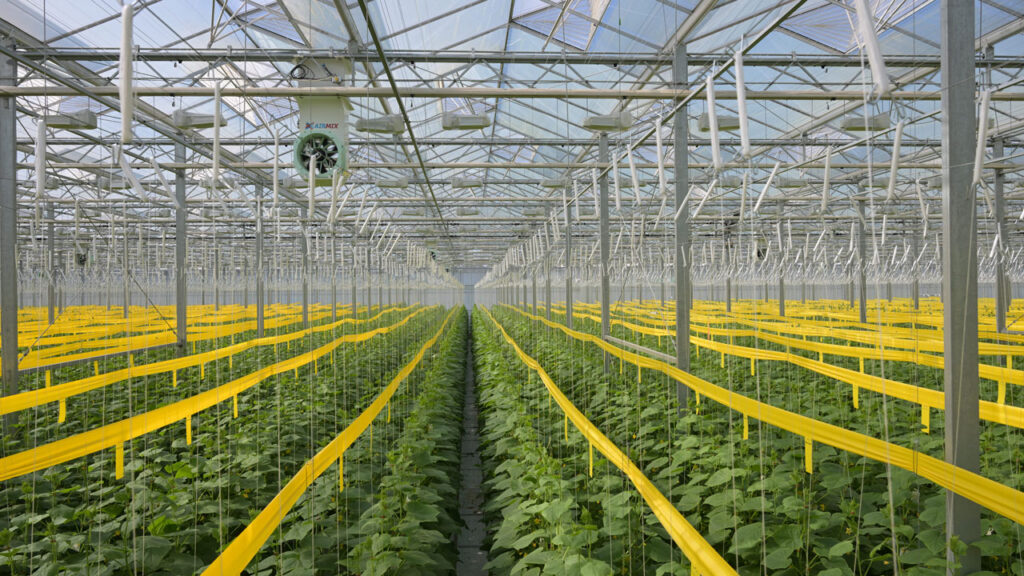Tariffs Shake Canadian Produce Supply Chain
October 27, 2025 | 7 min to read

Industry warns continued disputes could influence fresh produce affordability, access and stability.
Although other issues affect the Canadian supply chain — fuel, labor and the preparations for the review of the United States-Mexico-Canada Agreement (USMCA) in 2026 — all other considerations pale in comparison to the recent tariff turmoil, which has caused a rift across the North American supply chain.
More than that, however, a substantial disruption threatens the position of the two countries and Mexico, as a trading bloc that can contend with other international players, says Ron Lemaire, president of the Canadian Produce Marketing Association (CPMA), Ottawa, Ontario.
CPMA decided to hold its board of directors’ semi-annual meeting in Austin, TX, Sept. 17-20, and gave members a chance to meet and work with produce sector players involved in the U.S. and Mexico trade.
On July 24, CPMA and the International Fresh Produce Association (IFPA) issued a letter that urged the leaders of the United States, Mexico and Canada to resolve the ongoing tariff disputes that threaten the affordability, accessibility and stability of fresh fruits and vegetables across North America.
The letter read, in part: “In 2024 alone, Canada imported nearly $5.5 billion in fresh produce from the United States and $3 billion from Mexico. Meanwhile, the United States imported over 24 billion pounds of fresh produce from Mexico, valued at $19.6 billion, and exported more than $1.7 billion into Mexico.”
“The fresh produce supply chain is one of the most deeply integrated in the world, with cross-border trade between our nations ensuring year-round access to healthy fruits and vegetables,” notes IFPA Chief Executive Cathy Burns.
“The stability of the North American fresh produce market is paramount,” Lemaire adds. “Canada’s industry is inextricably linked with our trading partners. Any disruption directly impacts our growers, supply chains, and ultimately, consumer access and affordability.”
POPULAR OPINION
Canadian consumer sentiment has been swaying, Lemaire says, sometimes in opposition to purchasing U.S. products, sometimes settling into a less strident position, but opinions have shifted with trade and political development and declaration.
Hutch Morton, senior vice president, J.E. Russell Produce, Toronto, Ontario, says there’s been a shake-up in the marketplace.
“There has been a shift in consumer sentiment since the spring in Canada to ‘Buy Canadian,’” says Morton. “However, with fresh produce, that feeling is often aspirational, and consumers generally make a purchase decision based on quality and price.”
“There has been growth in some of our Canadian categories this year, and we’ve added some items, but the overall value in terms of sales dollars is small compared to our imports. In Canada, we have clear limitations around what we produce, and that doesn’t meet demand.”
Hutch Morton, J.E. Russell Produce, Toronto, Ontario
Lemaire says tariffs are disrupting Canada’s supply chain from the U.S. in several ways. When Canada imposed counter-tariffs on certain U.S. produce this spring, consumers faced a 25% surcharge on items like watermelons.
The Canadian counter-tariff on many commodities, including produce, came down Sept. 1, but Lemaire says it’s impossible to determine what new developments may develop.
Whatever national sentiment is involved, consumers buy produce primarily based on quality and price, he points out. In that case, whatever disruptions tariffs and trade contentions cause, the realities of procuring and purchasing fresh fruits and vegetables remain.
“It really has been a lose-lose for everybody, the consumer, the shipper, the buyer, everybody.”
Tariffs and related trade issues are causing new thinking in the Canadian produce sector, as produce market players consider how they will approach the future, says Morton.
“We continue to look at diversifying our supply chain in terms of shippers and regions,” he says. “Last summer, I joined CPMA on a trade mission to meet growers in Peru, and we subsequently sold more Peruvian product than any previous year. In September, I will join CPMA again on a mission to Turkey with the same goal.”
Lemaire says another danger is that price and emotional factors may lead consumers away from purchasing fresh produce and turn more to frozen and other alternatives. “Substitution is a traditional behavior in a high-tariff environment.”
Ultimately, cooperation is required to maintain a sensible, responsible supply chain. “We need to all be working together to drive a common message about the importance of a terror-free environment and a free trade dynamic,” says Lemaire.
GROWING CHANGES
Rachel Boucher, who oversees marketing and communications for Ontario Greenhouse Vegetable Growers in Leamington, Ontario, says tariffs have upended a vital trade flow that typically keeps costs down and products moving — at the very moment consumers are already squeezed by rising prices.
“Unnecessary stressors are being placed on the integrated produce supply chain based on trade negotiations and tariffs being applied,” she says. “These stressors continue to create doubt among consumers across North America, which will have significant impacts on healthier eating options, which will ultimately have an impact on consumption and demand due to increased costs.”
The trade between Ontario greenhouse growers and the U.S. has been a response to demand among American consumers, says Boucher.
“Greenhouse vegetables are highly dependent on the U.S. market. There are few alternate markets we can explore due to the perishability of our product and existing competition.”
Rachel Boucher, Ontario Greenhouse Vegetable Growers, Leamington, Ontario
“Ontario greenhouse vegetable farms ship more than two-thirds of our production to the U.S.,” she says. “The perishability of our product limits our options when seeking alternate export markets. Our sector continues to increase exports to the U.S., which is approximately 10 times the size of Canada and provides us access to over 58% of the U.S. population within one day’s drive.”

Morton says the changing tariff environment challenges supply chain connections across North America.
“I see tariffs affecting our supply chain from the U.S., both directly and indirectly,” he notes. “When Canada put counter-tariffs on some U.S. produce items, we have been paying a 25% tariff on watermelons and citrus. That negatively affects both volumes and margins, and ultimately makes produce more expensive at retail for Canadians.”
EFFECTS OF DISRUPTION
Sylvain Charlebois, Ph.D., professor, senior director, Agri-Food Analytics Lab, Dalhousie University, Halifax, Nova Scotia, says the story on tariffs has changed in substance.
“Canada initially slapped counter-tariffs on a range of U.S. agri-food products back in March, which rattled supply chains. But as of late August, Ottawa rolled back tariffs on food products that were never supposed to be hit under CUSMA (known as the USCMA in the U.S.) in the first place. That’s taken a lot of pressure off produce flows. Still, the episode underscored how fragile trade arrangements can be. The food industry doesn’t need surprises. It needs certainty to plan and invest confidently.”
Charlebois points out before tariffs became an issue in the spring, the produce trade “into the U.S. was running smoothly under CUSMA — efficient, predictable and growing. The brief period with counter-tariffs showed how quickly uncertainty creeps in. With the rollback, we’re back closer to ‘normal,’ but trust has been shaken a bit.”
Although tariffs take center stage in any look at the Canadian supply chain, other factors do come into play, some ongoing. Labor is always an issue.
“Labor is our No. 1 cost, closely followed by energy,” says Boucher. “Our members have been investing in research, innovation, and adaptation to offset labor and energy costs, but government policies, domestically and globally, have had negative impacts. Policies at the federal level, climate change initiatives aimed to penalize food producers, erode the competitiveness of our members.”
Charlebois agrees labor remains a chronic issue — seasonal workers are harder to secure and more expensive. “Consumers are demanding local, sustainable, and affordable produce all at once, which puts pressure on the supply chain.”
Innovation remains a driving factor in the Canadian produce sector.\
“Greenhouses and vertical farms are expanding fast in Canada, especially in Ontario and Quebec,” Charlebois notes. “These allow growers to stretch seasons, reduce import reliance, and even create new export opportunities. Breeding and varietal innovation also matter. Canadians are producing produce varieties that travel better, last longer, and appeal to shifting consumer tastes.
“These innovations add resilience, but without certainty in policy and trade, it’s harder for growers to scale them.”
18 of 32 article in Produce Business October 2025

